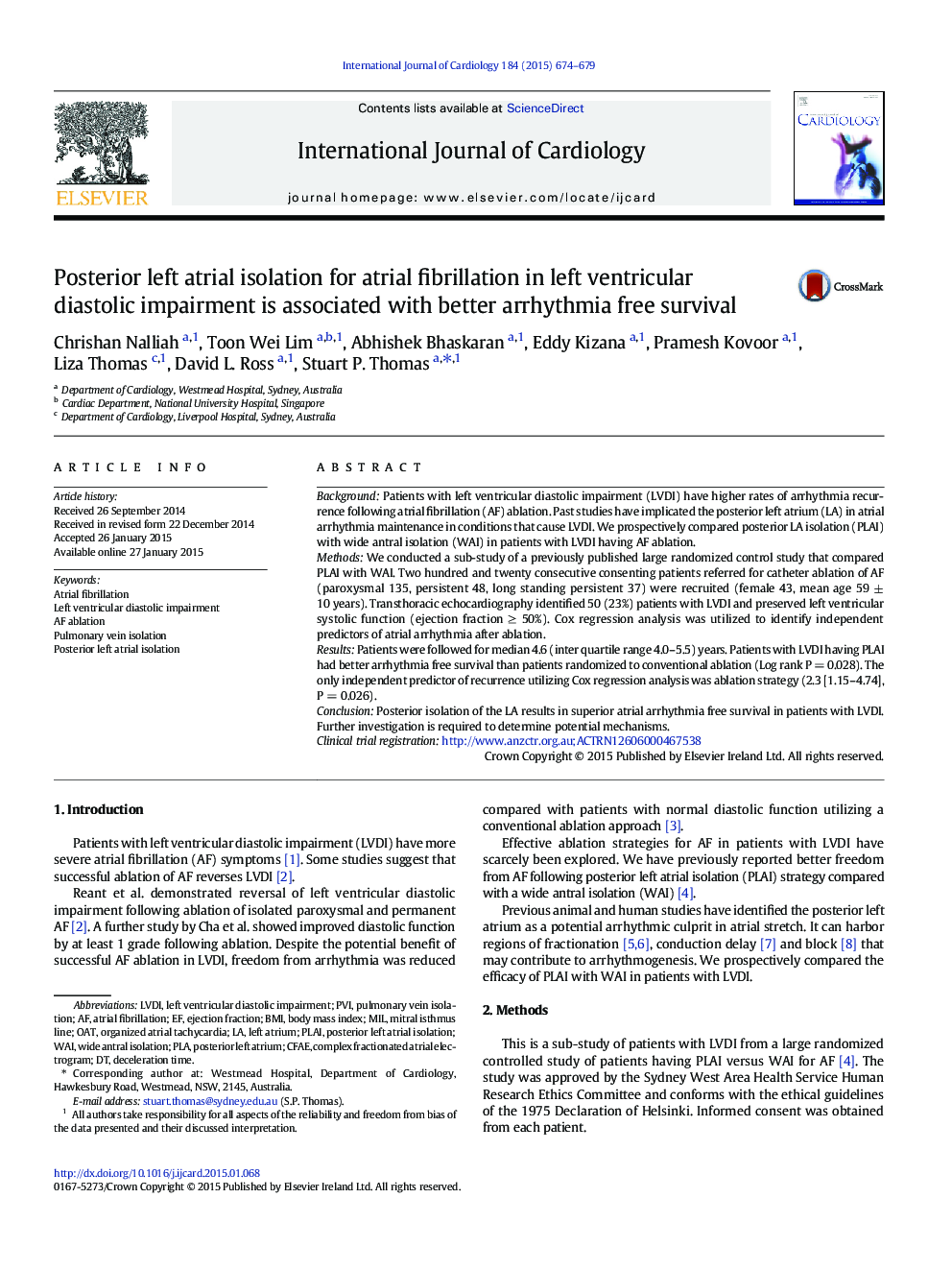| Article ID | Journal | Published Year | Pages | File Type |
|---|---|---|---|---|
| 5968405 | International Journal of Cardiology | 2015 | 6 Pages |
BackgroundPatients with left ventricular diastolic impairment (LVDI) have higher rates of arrhythmia recurrence following atrial fibrillation (AF) ablation. Past studies have implicated the posterior left atrium (LA) in atrial arrhythmia maintenance in conditions that cause LVDI. We prospectively compared posterior LA isolation (PLAI) with wide antral isolation (WAI) in patients with LVDI having AF ablation.MethodsWe conducted a sub-study of a previously published large randomized control study that compared PLAI with WAI. Two hundred and twenty consecutive consenting patients referred for catheter ablation of AF (paroxysmal 135, persistent 48, long standing persistent 37) were recruited (female 43, mean age 59 ± 10 years). Transthoracic echocardiography identified 50 (23%) patients with LVDI and preserved left ventricular systolic function (ejection fraction â¥Â 50%). Cox regression analysis was utilized to identify independent predictors of atrial arrhythmia after ablation.ResultsPatients were followed for median 4.6 (inter quartile range 4.0-5.5) years. Patients with LVDI having PLAI had better arrhythmia free survival than patients randomized to conventional ablation (Log rank P = 0.028). The only independent predictor of recurrence utilizing Cox regression analysis was ablation strategy (2.3 [1.15-4.74], P = 0.026).ConclusionPosterior isolation of the LA results in superior atrial arrhythmia free survival in patients with LVDI. Further investigation is required to determine potential mechanisms.Clinical trial registrationhttp://www.anzctr.org.au;ACTRN12606000467538
